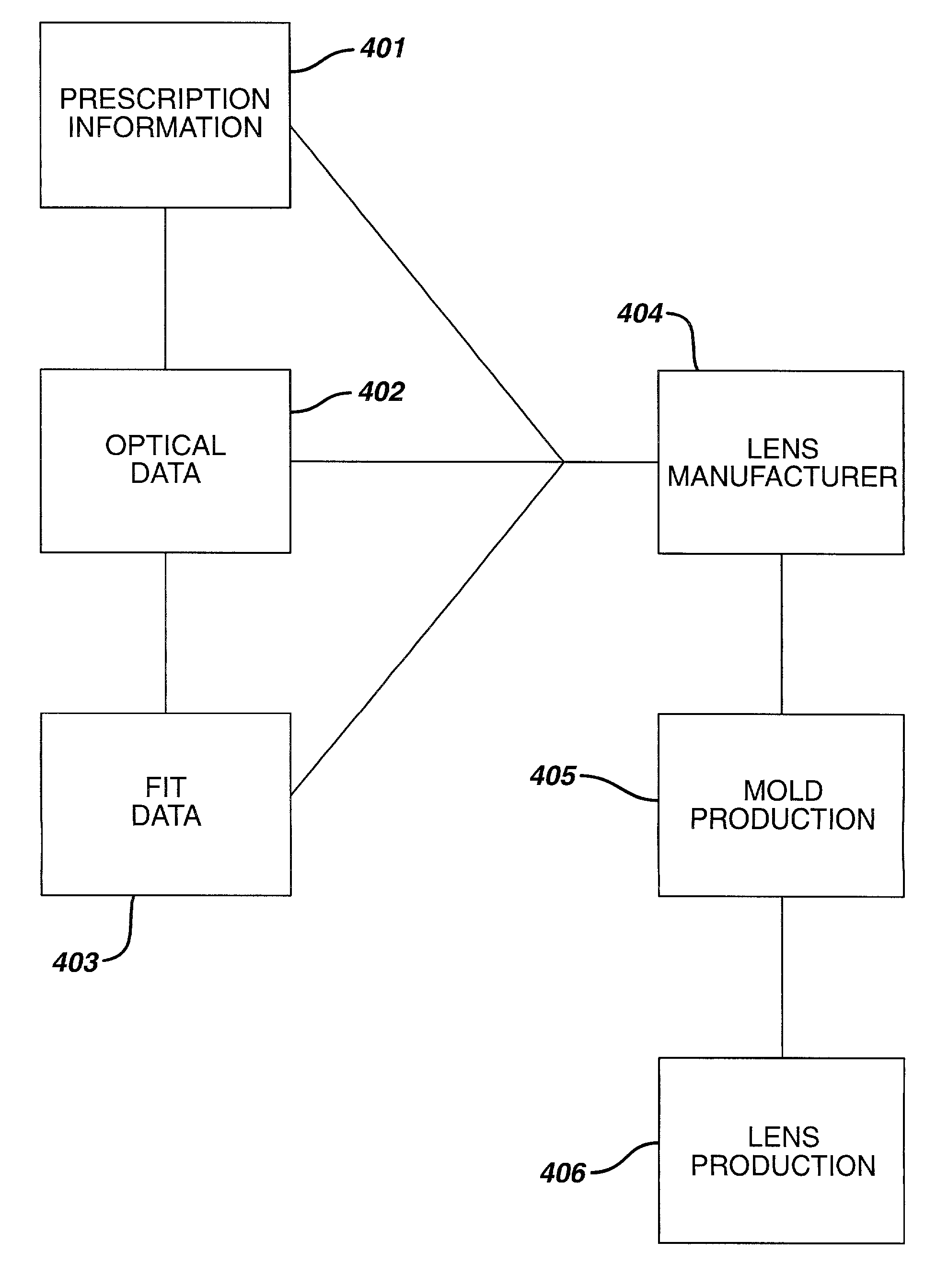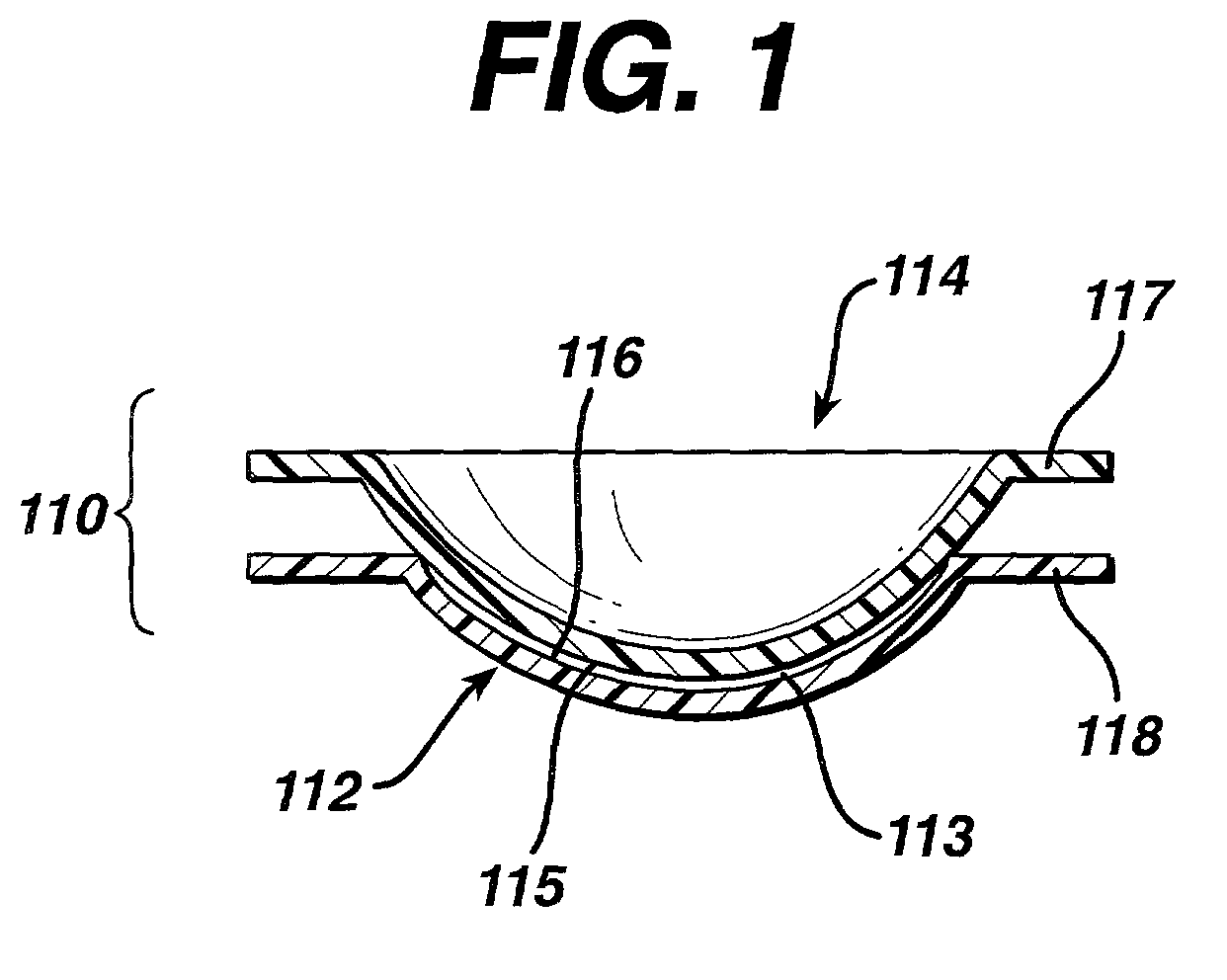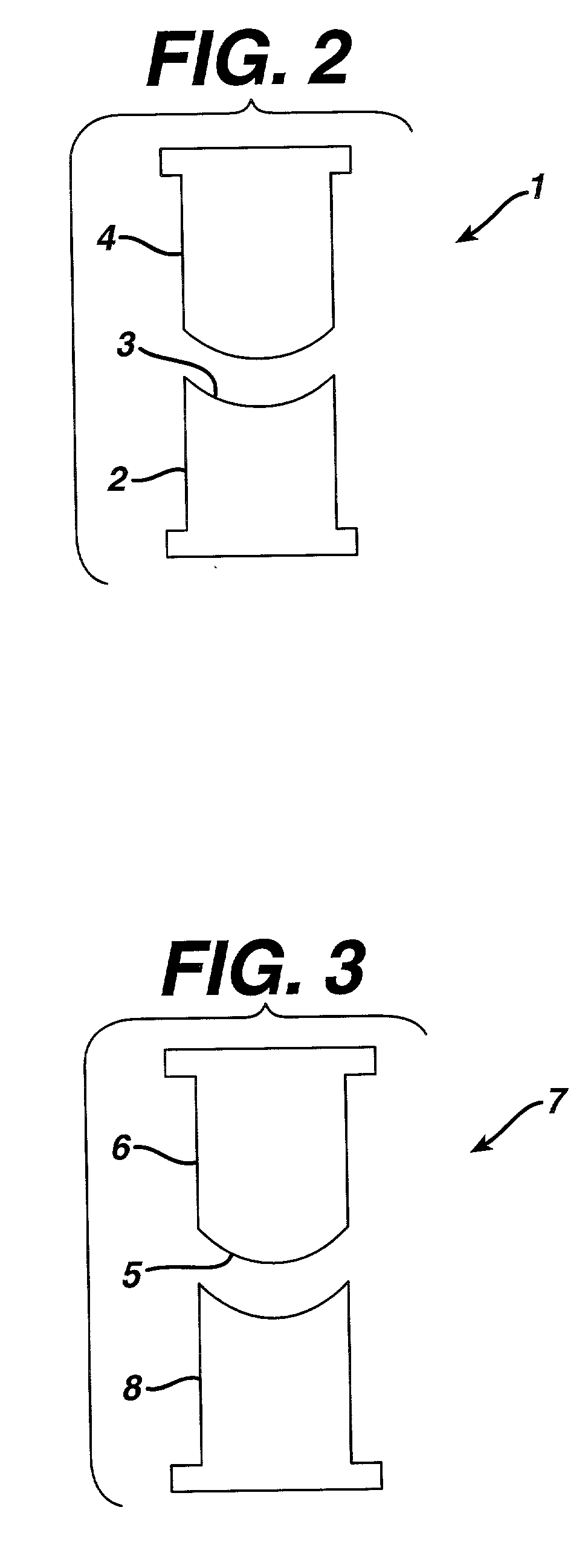Shape memory polymer or alloy ophthalmic lens mold and methods of forming ophthalmic products
- Summary
- Abstract
- Description
- Claims
- Application Information
AI Technical Summary
Benefits of technology
Problems solved by technology
Method used
Image
Examples
example 2
[0113] A polymeric reaction mixture was formulated by mixing vinyl neodecanoate (7%), divinyl benzene (1%), and styrene (60%) in random order to form a colorless solution. Polystyrene granules (30%) were then added to the resulting solution. The resulting mixture was then allowed to sit at room temperature with occasional stirring until all the polystyrene granules were dissolved to give a clear, viscous solution. Benzoyl peroxide (2%) was then added to the resulting solution (all composition % are by weight). The resulting mixture was ultrasonicated at room temperature for 15 minutes to yield a clear solution. The resulting solution was kept cold in a refrigerator before use. To prepare the shape memory polymer (SMP), the reaction mixture formulated above was injected by syringe into a mold fabricated with two 14" by 14" glass plates separated by Viton spacer. The two sheets of glass were held together by clamps around the edges. The Viton spacer also acts as sealant in the mold. T...
example 3
[0116] A sheet of polynorbornene SMP having a wide thickness variation of between 0.65 mm and 0.85 mm was cut into discs that were accommodated in a holding device of the type illustrated in the drawings. The SMP disc, disposed in the holding device, was placed in an alignment jig of the type depicted in the drawings and disposed between a base curve element and a core element of the type shown in the drawings.
[0117] The thus formed assembly was disposed on a hot plate and a 25 lb weight was placed atop the core element. The SMP sample was heated to a temperature slightly in excess of its glass transition temperature and then the pressure was applied. It is emphasized that this temperature was in excess of the curing temperature of the SMP polynorborene
[0118] The SMP disc, pressed between the core and base curve elements, was formed into the shape of the base curve element. Thereupon, the 25 lb weight and the hot plate were removed and the apparatus was cooled to ambient temperature...
example 4
[0122] Another example, in accordance with that described in Example 3, was conducted in which four female SMP contact lens mold halves were formed of the same sheet of polynorbornene used in Example 1. However, the four molds were fabricated using four different base curve elements. Thus each mold was formed from a different press assembly.
[0123] The measured results reported for this example were identical to the results reported in Example 3 with the exception that the surface roughness of the metal inserts was also reported, using the same instruments used in Example 3. However, two additional comparisons were included in this example. The first additional comparison was a measurement of the surface roughness of the SMP sheet from which the SMP molds were formed. This measurement was made in accordance with the procedure utilized in the determination of the surface roughness of the SMP molds and metal inserts. The second additional comparison was another surface roughness measur...
PUM
| Property | Measurement | Unit |
|---|---|---|
| Surface roughness | aaaaa | aaaaa |
| Length | aaaaa | aaaaa |
| Length | aaaaa | aaaaa |
Abstract
Description
Claims
Application Information
 Login to View More
Login to View More - R&D
- Intellectual Property
- Life Sciences
- Materials
- Tech Scout
- Unparalleled Data Quality
- Higher Quality Content
- 60% Fewer Hallucinations
Browse by: Latest US Patents, China's latest patents, Technical Efficacy Thesaurus, Application Domain, Technology Topic, Popular Technical Reports.
© 2025 PatSnap. All rights reserved.Legal|Privacy policy|Modern Slavery Act Transparency Statement|Sitemap|About US| Contact US: help@patsnap.com



